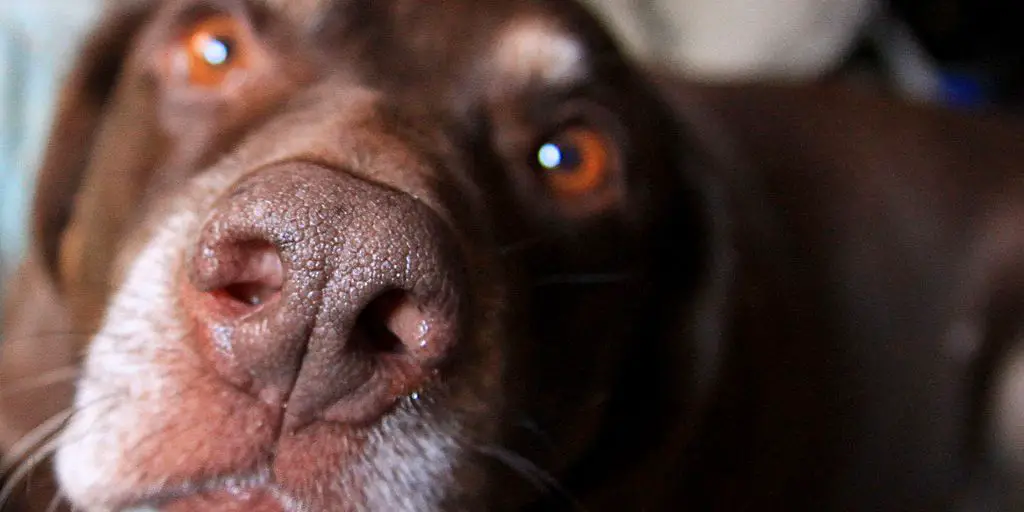Sebaceous adenomas are common benign tumors found in dogs, particularly as they age. These growths originate from the sebaceous glands, which are responsible for producing the skin’s natural oils. While sebaceous adenomas are generally harmless, they can sometimes cause discomfort or become infected, necessitating veterinary attention. Understanding the nature of these tumors, the breeds most at risk, and the available treatment options can help dog owners manage this condition effectively.
Key Takeaways
- Sebaceous adenomas are benign tumors arising from the sebaceous glands in dogs.
- Certain dog breeds and older dogs are more prone to developing sebaceous adenomas.
- Diagnosis typically involves a veterinary examination and may include fine-needle aspiration to rule out malignancy.
- Treatment options range from surgical removal to non-surgical methods, depending on the tumor’s size and location.
- Regular monitoring and preventive care can help manage and reduce the risk of complications associated with sebaceous adenomas.
Understanding Sebaceous Adenoma in Dogs
What is a Sebaceous Adenoma?
A sebaceous adenoma is a benign tumor that originates from the sebaceous glands, which are responsible for producing the natural oils in your dog’s skin. These growths are typically small, less than 1 cm in diameter, and can appear white to pink in color. They often have irregular borders and may secrete a greasy white material. The good news is that sebaceous adenomas are usually not cancerous! However, they can sometimes be confused with other skin issues, so it’s important to get a proper diagnosis.
Common Symptoms to Watch For
Sebaceous adenomas can present with a variety of symptoms. Here are some common signs to look out for:
- Small, white to pink growths on the skin
- Irregular borders around the growth
- Secretion of a greasy white material
- Local inflammation or infection if the growth is traumatized
If you notice any of these symptoms, it’s a good idea to consult your veterinarian for further evaluation.
How Sebaceous Adenomas Develop
Sebaceous adenomas develop from the sebaceous glands, which are the oil-producing glands in your dog’s skin. These glands can sometimes become overactive, leading to the formation of these benign tumors. While the exact cause is not always clear, factors such as age, breed, and genetics can play a role. It’s also worth noting that these adenomas are more common in older dogs.
It’s essential to keep an eye on any new growths on your dog’s skin and consult your vet for a proper diagnosis. Early detection can help manage the condition more effectively.
Breeds Prone to Sebaceous Adenomas

When it comes to sebaceous adenomas, some dog breeds are more susceptible than others. Certain breeds have a higher likelihood of developing these benign tumors, especially as they age. Knowing which breeds are at higher risk can help you stay vigilant and proactive in monitoring your dog’s skin health.
Diagnosing Sebaceous Adenomas
When it comes to diagnosing sebaceous adenomas in dogs, there are a few key steps that your veterinarian will take to ensure an accurate diagnosis. It’s essential to get a proper diagnosis to differentiate these benign tumors from other potentially more serious conditions.
Treatment Options for Sebaceous Adenomas
When it comes to treating sebaceous adenomas in dogs, there are several options available. Not all cases require treatment, but it’s essential to know when intervention is necessary and what methods are available.
When Treatment is Necessary
In many cases, sebaceous adenomas are benign and don’t require any treatment. However, if the tumor is causing discomfort, growing rapidly, or becoming infected, it’s time to consider treatment options. Always consult your vet to monitor the healing process and signs of complications.
Surgical Removal
Surgical removal is often the go-to option for problematic sebaceous adenomas. This can be done through traditional surgery, laser ablation, or cryosurgery. The procedure is usually quick, and your dog can often go home the same day. Surgical removal is generally curative, especially for lesions that are cosmetically unacceptable or bothersome to the dog.
Non-Surgical Treatments
For those looking for alternative solutions to traditional surgery, there are non-surgical treatments available. These may include topical medications or less invasive procedures like laser therapy. While these methods can be effective, they may not be suitable for all cases, so it’s crucial to discuss these options with your veterinarian.
It’s important to weigh the pros and cons of each treatment option and choose the one that best suits your dog’s needs and lifestyle.
Home Care for Dogs with Sebaceous Adenomas
Taking care of a dog with sebaceous adenomas at home can be straightforward with the right approach. Here are some tips to help you manage your dog’s condition effectively.
Potential Complications of Sebaceous Adenomas
Sebaceous adenomas in dogs are generally benign, but they can lead to several complications that pet owners should be aware of. Understanding these potential issues can help you manage your dog’s health more effectively.
Infection Risks
One of the most common complications is infection. If the adenoma becomes traumatized, it can lead to local inflammation or infection. This is especially true if your dog tends to scratch or bite at the tumor. Keeping an eye on the tumor and maintaining good hygiene can help prevent this.
Ulceration and Bleeding
Sebaceous adenomas can sometimes become ulcerated, leading to bleeding. This can be particularly concerning if the tumor is located in an area where it is easily irritated, such as the limbs or eyelids. If you notice any signs of ulceration, it’s crucial to consult your veterinarian for appropriate treatment.
Behavioral Changes
Dogs with sebaceous adenomas may exhibit behavioral changes due to discomfort or pain. They might become more irritable or anxious, especially if the tumor is causing them significant discomfort. Monitoring your dog’s behavior and consulting your vet can help manage these changes effectively.
It’s essential to consult professionals before using any treatments that could exacerbate these issues. Avoid using products that could cause further irritation or complications.
By staying vigilant and consulting your veterinarian regularly, you can help ensure your dog’s long-term health and well-being.
Preventing Sebaceous Adenomas
Preventing sebaceous adenomas in dogs can be a bit tricky, but there are some steps you can take to reduce the risk. Diet and nutrition play a crucial role in maintaining your dog’s overall health, including their skin. Make sure your dog is eating a balanced diet rich in essential fatty acids, vitamins, and minerals. Regular vet check-ups are also essential. These visits can help catch any potential issues early on, including sebaceous adenomas. Your vet can provide personalized advice tailored to your dog’s specific needs.
Diet and Nutrition
A well-balanced diet is key to keeping your dog’s skin healthy. Foods rich in omega-3 and omega-6 fatty acids can help maintain skin elasticity and moisture. Consider adding fish oil or flaxseed oil to their diet. Always consult your vet before making any significant changes to your dog’s diet.
Regular Vet Check-Ups
Routine veterinary visits are crucial for early detection and prevention of sebaceous adenomas. During these check-ups, your vet can monitor your dog’s skin health and recommend any necessary treatments or lifestyle changes.
Skin Care Tips
Proper skin care can go a long way in preventing sebaceous adenomas. Regular grooming helps remove dead skin cells and distribute natural oils, keeping the skin healthy. Use dog-friendly shampoos and conditioners to avoid irritation. Additionally, keep an eye out for any unusual lumps or bumps and consult your vet if you notice anything suspicious.
Living with a Dog with Sebaceous Adenomas
Managing Multiple Tumors
Living with a dog that has multiple sebaceous adenomas can be challenging. These tumors can appear in various places on your dog’s body, and while they are generally benign, they can sometimes cause discomfort. Regular vet check-ups are essential to monitor the growth and ensure they don’t become problematic. If you notice your dog constantly rubbing or licking at a tumor, it might be time to consult your vet for further evaluation.
Quality of Life
Ensuring your dog’s quality of life is paramount. Even though sebaceous adenomas are usually harmless, they can sometimes cause irritation or become infected. Keeping an eye on your dog’s behavior and any changes in their skin condition is crucial. Simple measures like maintaining a healthy diet and regular grooming can go a long way in keeping your dog comfortable.
Emotional Support for Your Dog
Dogs can sense when something is off, and having multiple tumors might make them feel uneasy. Providing emotional support is just as important as physical care. Spend quality time with your dog, offer plenty of affection, and make sure they feel secure. Sometimes, a little extra love can make a big difference in how your dog copes with their condition.
Living with a dog that has sebaceous adenomas requires a bit more attention and care, but with the right approach, you can ensure your furry friend remains happy and healthy.
When to Consult Your Veterinarian
Knowing when to consult your veterinarian about your dog’s sebaceous adenomas is crucial for their health and well-being. Regular check-ups with your veterinarian are essential to monitor the growths’ status and any changes. Seek guidance if you notice any signs of complications or if you’re unsure about the best course of action.
Signs of Complications
If you observe any of the following signs, it’s time to consult your vet:
- Rapid growth of the adenoma
- Changes in color or texture
- Ulceration or bleeding
- Signs of infection, such as redness, swelling, or discharge
- Behavioral changes in your dog, like increased scratching or discomfort
Questions to Ask Your Vet
When you visit your vet, consider asking these questions:
- What is the best treatment option for my dog’s condition?
- Are there any risks associated with the recommended treatment?
- How can I monitor the adenoma at home?
- What signs should I look for that indicate the condition is worsening?
- Are there any lifestyle changes I should make to help my dog?
Follow-Up Care
Follow-up care is essential to ensure your dog’s sebaceous adenomas are managed effectively. Schedule regular appointments to keep track of any changes and to discuss any concerns you may have. Your vet may recommend additional tests or treatments based on your dog’s progress.
It’s always better to be proactive about your dog’s health. If you’re ever in doubt, don’t hesitate to reach out to your veterinarian for advice and support.
Conclusion
Sebaceous adenomas in dogs might sound scary, but they’re generally harmless and manageable. These benign tumors, often found in older dogs, usually don’t cause any issues unless they become irritated or infected. Regular check-ups with your vet can help catch these growths early and ensure they don’t turn into a bigger problem. Remember, while sebaceous adenomas are typically not a cause for alarm, it’s always best to consult with your veterinarian if you notice any new lumps or bumps on your furry friend. Keeping an eye on your dog’s health and seeking professional advice when needed can help ensure they live a happy, healthy life.
Frequently Asked Questions
What is a sebaceous adenoma in dogs?
A sebaceous adenoma is a benign tumor that originates from the sebaceous glands, which are responsible for producing oil in the skin. These tumors are usually pinkish and can secrete a greasy white material.
What are the common symptoms of sebaceous adenomas in dogs?
Common symptoms include small, raised lumps on the skin that may be pink or white. These lumps can sometimes secrete a greasy substance and may become inflamed or infected if traumatized.
Which dog breeds are more prone to sebaceous adenomas?
Some breeds, such as Cocker Spaniels, Beagles, and Poodles, are more prone to developing sebaceous adenomas. Genetic factors and age can also play a role in the development of these tumors.
How are sebaceous adenomas diagnosed in dogs?
Diagnosis typically involves a veterinary examination, often followed by a fine-needle aspiration to collect cells from the tumor for analysis. This helps differentiate sebaceous adenomas from other skin issues.
When is treatment necessary for sebaceous adenomas in dogs?
Treatment is generally not necessary unless the tumor becomes problematic, such as causing discomfort, becoming infected, or bleeding. In such cases, surgical removal may be recommended.
What are the treatment options for sebaceous adenomas in dogs?
Treatment options include surgical removal, especially if the tumor is causing discomfort or infection. Non-surgical treatments, like cryotherapy, may also be considered in some cases.
How can I care for my dog at home if they have sebaceous adenomas?
Home care involves monitoring the tumor for changes, preventing your dog from scratching or licking it, and keeping the area clean to prevent infection. Regular veterinary check-ups are also important.
What complications can arise from sebaceous adenomas in dogs?
Potential complications include infection, ulceration, and bleeding. Behavioral changes may also occur if the tumor causes significant discomfort or distress to the dog.


